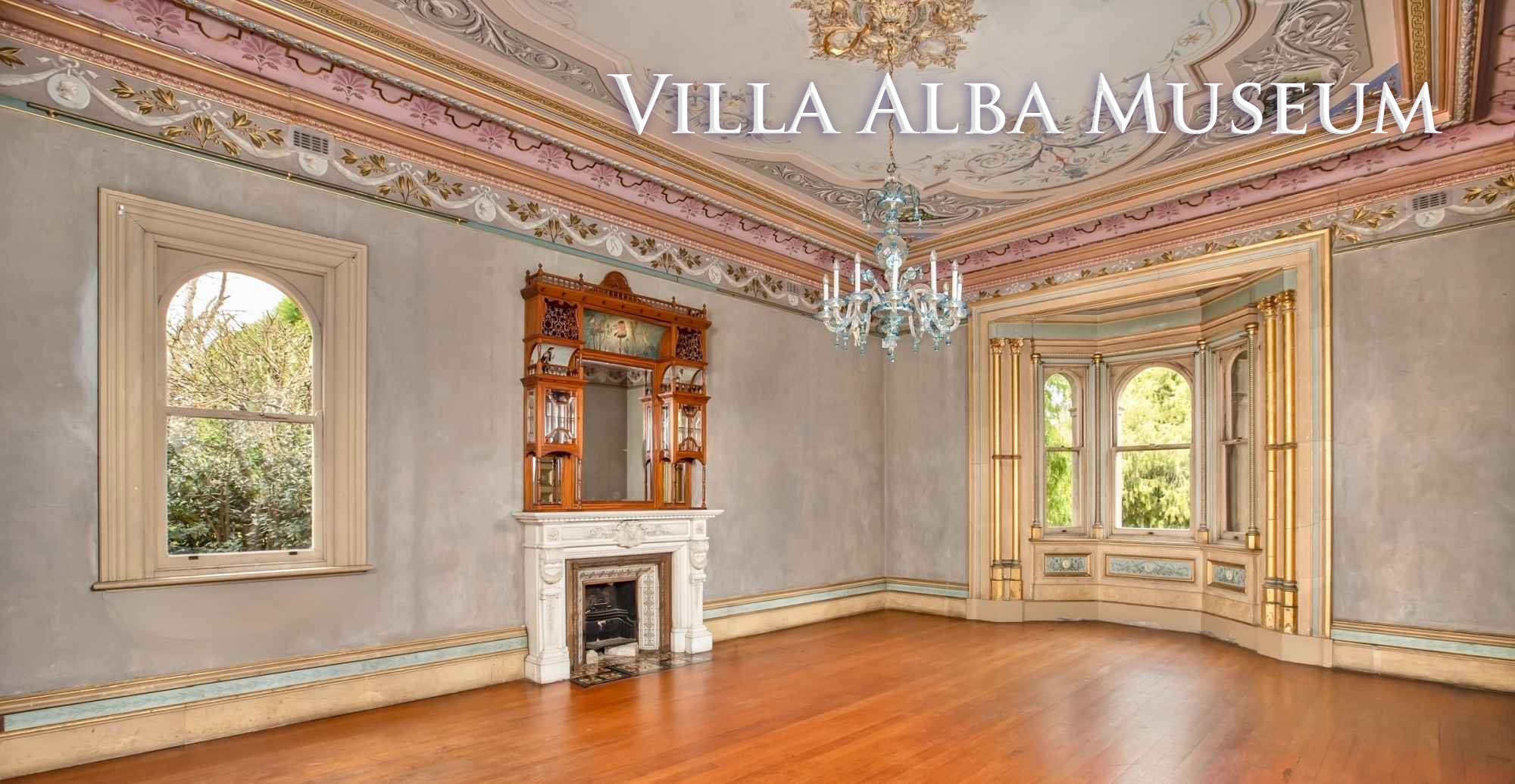The re-created garden is the result of a scheme developed by noted architectural and landscape historian Dr. James Broadbent to re-instate the garden destroyed by the building of the hospital wards which surrounded the house from the 1950s to the early 1980s. His horticultural knowledge was combined with his analysis of the detailed research by Mrs. Jessie Serle; the compilation by Adshead & McQuie of information in surveyor’s field notebooks from 1894 and 1911; archaeology by Maddy Atkinson and family photographs belonging to Fripp family descendants. Dr. Broadbent’s research confirmed the original outlines of garden beds and the location of the summer house, pergola and fernery. Only one plant is thought to have survived from Greenlaw’s time: a now coppiced fig tree adjacent to the retaining wall near the northwest corner of Villa Alba.
The rebuilding and planting of the landscape using heritage species selected by Dr. Broadbent from 19th century nurserymen’s catalogues and other historic records was carried out by Eagles Contracting. The public also generously helped with sourcing hard-to-find heritage plants. The discovery of an original wooden garden tile resulted in a project to reproduce sufficient jarrah tiles to edge the front garden beds. This project was generously supported by members of the public who purchased tiles for placement in Villa Alba’s garden.
As the garden continues to grow and take on the form of its predecessor in the late 19th century, it provides an elegant setting appropriate to this significant building. In a ceremony in 2005 it was named The Sir Rupert Hamer Heritage Landscape as fitting reminder of the great contribution of Sir Rupert Hamer to Villa Alba and the cultural life of Victoria.
A DVD produced by the ABC’s Gardening Australia tells the story of the re-interpretation and development of the garden and can be viewed by visitors to Villa Alba.
